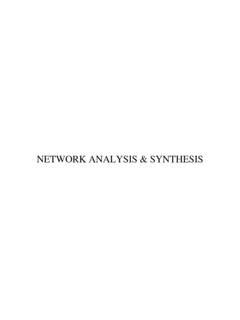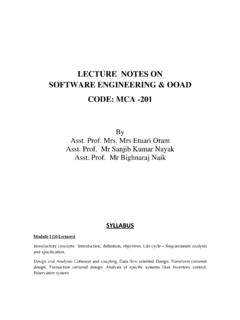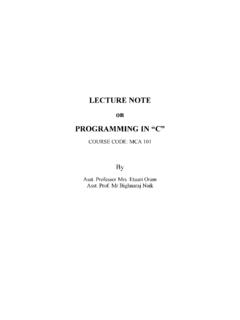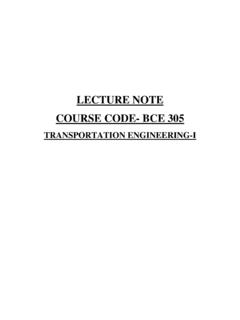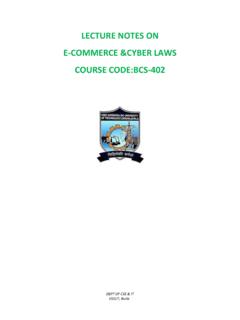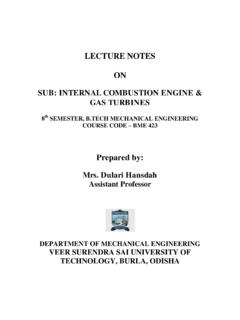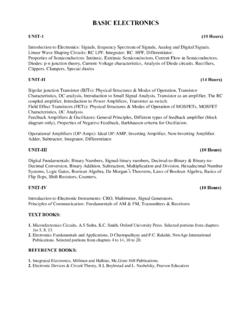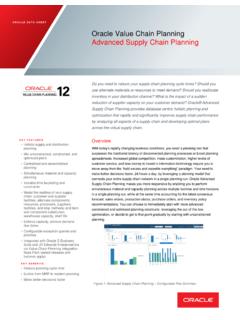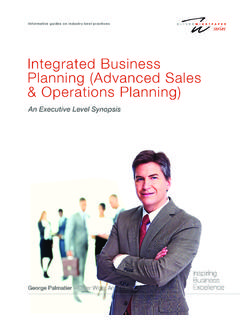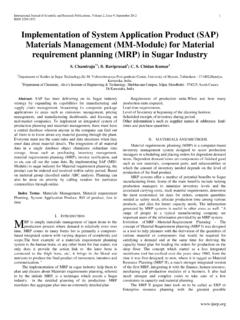Transcription of Lectures notes On Production and Operation Management
1 Lectures notes On Production and Operation Management Prepared by Dr. Sarojrani Pattnaik Dr. Swagatika Mishra Assistant Professor Department of Mechanical Engineering VSSUT Burla . Production AND Operation Management (3-0-0). 1. Productivity : Importance, productivity ratio, productivity measurement, productivity index, awareness improvement maintenance ( ). proceSs. 2. Production System Models of Production system, Product Vs. Services, Process-focused & product focused systems, product strategies, product life cycle, Production function. 3. Forecasting : Methods moving average, exponential smoothing, Regression analysis, coefficient of co-relation, Delphi, Market survey.
2 4. Facilities planning : Site location, facilities layout and various types, planning using CRAFT work place design, working conditions noise illumination etc. 5. Motion study principles of motion economy, Time study-standard time. 6. Production planning & Control : aggregate planning . Sequencing, Line balancing, Flow control, Dispatching, expediting, Gantt chart, line of balance, learing curve. 7. Project Management Network scheduling, PERT. Critical path, Most likely time estimate , Resource leveling. 8. Trends in Manufacturing :Basic concepts of CAD,CAM,FMS, CIM, ISO 9000, Quality circle, Kaizen, Kanbans, Poke Yoke' supply chain Management .
3 Text Books 1. Production Systems : planning , Analysis & Control : By Riggs, (4th Edn.) John Wiley & Sons 2. Modern Production / Operation Management : By Buffa, & Sarin, =,.K.(8`" Edn.) John Wiley & Sons. 3. Production & operations Management : By Panneer saivem, R.(2' 1 Edn.). PHI. 4. Production & operations Managem ent : By Chary, (TMH). VEER SURENDRA SAI UNIVERSITY OF TECHNOLOGY BURLAHA. DEPARTMENT OF MECHANICAL. LESSON PLAN FOR Production and Operation Management SUBJECT CODE: 8th Semester Lecture Topics to be covered Remark Lecture 1 Productivity: Importance, productivity ratio, productivity measurement, productivity index Lecture 2 Awareness improvement maintenance ( ) process, Production System, Models of Production system Lecture 3 Product Vs.
4 Services, Process-focused & product- focused systems Lecture 4 Product strategies, product life cycle, Production function Lecture 5 Forecasting: Methods Lecture 6 Moving average, Exponential smoothing Lecture 7 Regression analysis, coefficient of co-relation Lecture 8 Delphi, Market survey Lecture 9 Facilities planning : Site location, facilities layout Lecture 10 Types of facility layout, planning using CRAFT work place design Lecture 11 Working conditions noise illumination etc. Lecture 12 Problems on single facility location using median method Lecture 13 Problems on single facility location using minimax method and gravity method Lecture 14 Problems on single facility location using Euclidean-distance location Lecture 15 Motion study, Principles of motion- economy, method study Lecture 16 Rules concerning human body, workplace layout and materials handling, Lecture 17 Rules concerning tools and equipments design.
5 Time conservation Lecture 18 Time study and work measurement techniques Lecture 19 Performance rating and different types of allowances Lecture 20 Production planning and control- aggregate planning Lecture 21 Sequencing and line balancing Lecture 22 Flow control Lecture 23 Dispatching, centralized and decentralized dispatching Lecture 24 Expediting and Gantt chart Lecture 25 Line of balance and learning curve Lecture 26 Project Management , network scheduling Lecture 27 PERT with problems Lecture 28 Problems Lecture 29 Critical path method with problems Lecture 30 Problems Lecture 31 Resource levelling Lecture 32 Basic concepts of CAD, CAM, FMS.
6 Lecture 33 CIM, JIT, ISO 9000. Lecture 34 Quality circle, Kaizen, Kanbans Lecture 35 Poke Yoke, Supply chain Management Lecture 36 Revision of problems Lecture 37 Revision of problems Lecture 38 Revision of problems Lecture 39 Revision of problems Lecture 40 Revision of problems CHAPTER-I. PRODUCTIVITY. Introduction Production / Operation Management is the process which combines and transforms various resources used in the Production / Operation subsystem of the organization into value added products/services in a controlled manner as per the policies of the organization. Resources used in Value added products/services Transform Production / Operation (In controlled manner as subsystem per the policies of the organization).
7 Production / Operation function: Range of inputs Required output (product/service). (Having the requisite quality level). The set of interrelated Management activities which are involved in manufacturing certain products is called Production Management and for service Management , then corresponding set of Management activities is called as Operation Management . Examples: (Products/goods). Boiler with a specific capacity, Constructing flats, Car, bus, radio, television. Examples: (Services). Medical facilities, Travel booking services. In the process of managing various subsystems of the organization executives at different levels of the organization need to track several Management decisions.
8 The Management decisions are Strategic, tactical and operational. Strategic (Top level) Tactical (Middle level) Operational (Bottom level). Defining goals Plant location effective and Making policies new product establishment efficient utilization Monitoring of budgets of resources Corrections from feedback information: Tight quality check on the incoming raw-material. Adjustment of machine settings. Change of tools. Proper allocation of operations to machines with matching skills. Change in the Production plans. Productivity: Productivity is a relationship between the output (product/service) and input (resources consumed in providing them) of a business system.
9 The ratio of aggregate output to the aggregate input is called productivity. Productivity = output/Input For survival of any organization, this productivity ratio must be at least it is more than 1, the organization is in a comfortable position. The ratio of output produced to the input resources utilized in the Production . Importance: Benefits derived from higher productivity are as follows: It helps to cut down cost per unit and thereby improve the profits. Gains from productivity can be transferred to the consumers in form of lower priced Products or better quality products.
10 These gains can also be shared with workers or employees by paying them at higher rate. A more productive entrepreneur can have better chances to exploit expert opportunities. It would generate more employment opportunity. Overall productivity reflects the efficiency of Production system. More output is produced with same or less input. The same output is produced with lesser input. More output is produced with more input. The proportional increase in output being more than the proportional increase in input. Productivity Measurement: Productivity may be measured either on aggregate basis or on individual basis, which are called total and partial measure.
